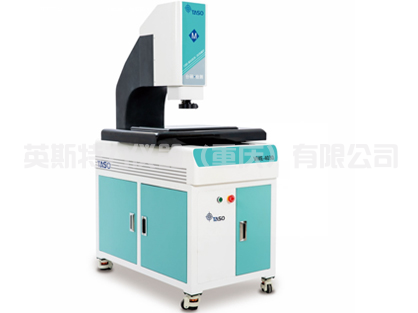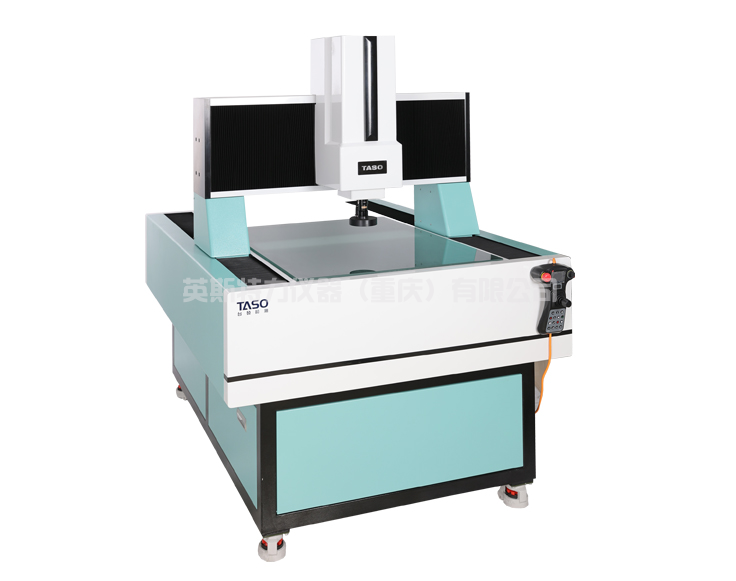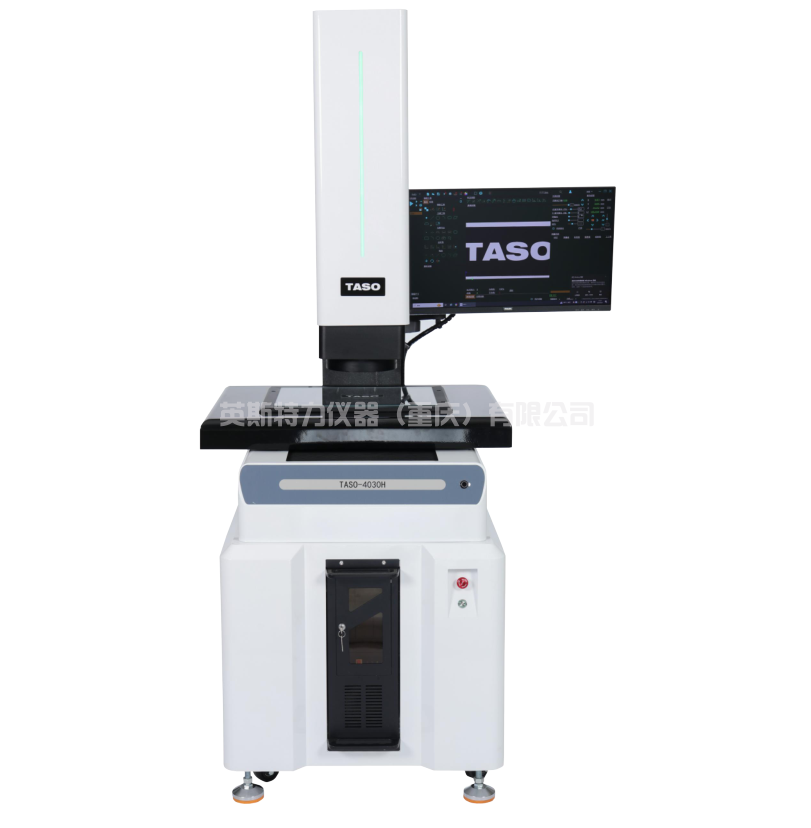如今,硬度计已广泛应用于工厂、车间等行业各种金属材料的硬度测量。 然而,硬度计的种类繁多,消费者往往会担心硬度计的选择。 接下来,我们就可以了解一下常见的三种硬度计的使用范围和区别。
在测量金属的硬度时,洛氏硬度计、布氏硬度计和维氏硬度计比较多。 据统计,在硬度计的使用中,洛氏硬度计的应用已达到70%。 洛氏硬度计常用的标尺有HRC、HRB和HRF,其中HRC标尺用于测试淬火钢、回火钢、调质钢和部分不锈钢。 这是金属加工行业中使用最广泛的硬度测试方法。 HRB 标尺用于测试各种退火钢、正火钢、低碳钢、一些不锈钢和更硬的铜合金。 HRF 标尺用于测试纯铜、较软的铜合金和硬铝合金。 尽管 HRA 标尺也可用于大多数黑色金属,但其实际应用通常仅限于测试硬质合金和薄硬钢带材料。
使用洛氏硬度试验时,当材料薄、试样小、表面硬化层浅或测试表面涂层时,应改用表面洛氏硬度试验。 洛氏硬度计适用于批量加工的成品或半成品工件的逐件检测。 这种测试方法对测量操作要求不高,非专业人员也很容易掌握。 它可以测试各种黑色金属和有色金属,测试淬火钢、回火钢、退火钢、表面硬化钢、各种厚度的板材、硬质合金材料、粉末冶金材料和热喷涂层的硬度。
布氏硬度计特别适用于组织不均匀的锻钢和铸铁的硬度测试。 布氏硬度试验也可用于有色金属和低碳钢。 小直径球压头可以测量小尺寸和薄材料。 布氏硬度计主要用于检测原材料和半成品。 由于压痕较大,一般不用于灰口铸铁、轴承合金和成品中晶粒粗大的金属材料的检测。 其测试数据稳定,重现性好,精度高于罗克韦尔,低于维氏。 此外,布氏硬度值与抗拉强度值有很好的对应关系。 布氏硬度测试的缺点是压痕大,成品检验困难,测试过程比洛氏硬度测试复杂,测量操作和压痕测量耗时,凸度大 、压痕边缘的凹陷或平滑过渡会使压痕直径的测量有较大的误差,因此要求操作者具有熟练的测试技术和丰富的经验,一般要求由专门的实验人员操作。
维氏硬度计是检测热处理工件表面硬度的重要方法。 它可以用0.5到100kg的试验力来测试薄至0.05mm厚的表面硬化层。 它具有最高的精度,可以区分热处理工件的表面硬度。 小的差异。 此外,有效硬化层的深度也由维氏硬度计检测。 因此,对于进行表面热处理加工或使用大量表面热处理工件的单位,需要配备维氏硬度计。
硬度表示材料抵抗硬物进入其表面的压力的能力。 它是金属材料的重要性能指标之一。 一般来说,硬度越高,耐磨性越好。 常用的硬度指标有布氏硬度、洛氏硬度和维氏硬度。
区别如下:
1、布氏硬度(HB)
光学原理,测量圆形压痕的直径。 以一定的载荷(一般为3000kg)将一定尺寸(一般为直径10mm)的硬化钢球压入材料表面,并保持一段时间。 去除载荷后,载荷与其压痕面积之比为布氏硬度值(HB),单位为千克力/mm2(N/mm2)。
特点:压痕大,精度高;
缺点:光学原理,压痕直径需要通过目镜用肉眼测量。
但可选择CCD硬度图像处理系统(压痕图像投影在电脑上)
2.洛氏硬度(HR)
原理是测量深度。 当HB>450或样品太小时,不能使用布氏硬度测试,而改用洛氏硬度测量。 它是用一个顶角为120°的金刚石锥体或直径为1.59和3.18mm的钢球在一定载荷下压入被测材料表面,从深度得到材料的硬度。 缩进。 根据测试材料的硬度不同,用三种不同的尺度表示:
HRA:是用60kg载荷和金刚石圆锥压头得到的硬度,用于超高硬度的材料(如硬质合金等)。
HRB:是用100kg载荷和直径为1.58mm的硬化钢球得到的硬度。 用于硬度较低的材料(如退火钢、铸铁等)。
HRC:是用150kg的载荷和金刚石圆锥压头得到的硬度,用于硬度较高的材料(如淬硬钢等)。
优点:操作简单快捷,直接数显; 是三种硬度计中最容易操作和使用的。
缺点:无法测量0.2mm以下太薄的工件
3.维氏硬度(HV)
光学原理,测量金刚石压痕的对角线长度。 用120kg以内的载荷和顶角为136°的金刚石方锥压头压入材料表面,将材料压痕坑的表面积除以载荷值,即为维氏硬度HV 值 (kgf/mm2)。
特点:压痕大,精度高,可测量薄工件。 是三款机器中测量范围最广的。
缺点:光学原理,压痕直径需要通过目镜用肉眼测量。
但可选择CCD硬度图像处理系统(压痕图像投影在电脑上)
以上就是为大家总结的三种常用硬度计的区别,希望对大家选择硬度计有所帮助。
英斯特力仪器是一家集研发、生产及销售于一体的 影像测量仪,拉力试验机, 硬度计 ,探伤仪, 粗糙度仪, 测厚仪, 金相设备厂家, 致力于为客户提供更好的检测仪器。
Nowadays, hardness tester has been widely used in factories, workshops and other industries to measure the hardness of various metal materials. However, there are many kinds of hardness tester, and consumers often worry about the choice of hardness tester. Next, we can understand the common three kinds of hardness tester use scope and difference.
In the measurement of metal hardness, Rockwell hardness tester, Brinell hardness tester and Vickers hardness tester more. According to statistics, in the use of hardness tester, rockwell hardness tester application has reached 70%. HRC, HRB and HRF scales are commonly used in Rockwell hardness tester. HRC scales are used to test hardened steel, tempered steel, tempered steel and some stainless steel. This is the most widely used hardness test in the metalworking industry. HRB scales are used to test various annealed and normalized steels, mild steels, some stainless steels and harder copper alloys. HRF scales are used to test pure copper, softer copper alloys and duralumin alloys. Although the HRA scale can be used with most ferrous metals, its practical application is usually limited to testing cemented carbide and thin hard steel strip materials.
When using the Rockwell hardness test, when the material is thin, the sample is small, the surface hardening layer is shallow or the surface coating is tested, the surface Rockwell hardness test should be used instead. Rockwell hardness tester is suitable for batch processing of finished or semi-finished workpiece test piece by piece. This test method is not demanding for measurement operation and is easy for non-specialists to master. It can test all kinds of ferrous and non-ferrous metals, test the hardness of hardened steel, tempered steel, annealed steel, surface hardened steel, sheet metal of various thicknesses, carbide materials, powder metallurgy materials and thermal spraying layer.
Brinell hardness tester is especially suitable for testing the hardness of forged steel and cast iron with uneven structure. Brinell hardness test can also be used for non-ferrous metals and mild steel. Small diameter ball indenter can measure small size and thin material. Brinell hardness tester is mainly used for testing raw materials and semi-finished products. Because of the large indentation, it is generally not used for the detection of gray cast iron, bearing alloy and finished metal materials with coarse grain. The test data is stable and reproducible, the accuracy is higher than rockwell and lower than Vickers. In addition, brinell hardness and tensile strength have a good relationship. Is the shortcoming of brinell hardness test indentation, finished goods inspection is difficult, the testing process living cells-recognition complex hardness test, operation and indentation measurement time consuming, big crown, indentation on the edge of the sag or smooth transition will make the indentation diameter measurement has bigger error, therefore asked the operator proficiency testing technology and rich experience, general requirements by professional experiment operation.
Vickers hardness tester is an important method to measure the surface hardness of heat-treated workpiece. It can test surface hardening layers as thin as 0.05mm with test forces of 0.5 to 100kg. It has the highest accuracy and can distinguish the surface hardness of heat-treated workpiece. Small differences. In addition, the depth of the effective hardening layer is measured by vickers hardness tester. Therefore, for the surface heat treatment processing or use a large number of surface heat treatment of the workpiece unit, need to be equipped with vickers hardness tester.
Hardness is the ability of a material to resist the pressure of a hard object entering its surface. It is one of the important performance indexes of metal materials. Generally speaking, hardness is taller, wear resistance had jumped over. Commonly used hardness indicators are Brinell hardness, Rockwell hardness and Vickers hardness.
Vickers hardness tester, Brinell hardness tester and Rockwell hardness tester are the three most commonly used hardness tester.
The differences are as follows:
1. Brinell Hardness (HB)
Optical principle, measurement of circular indentation diameter. A hardened steel ball of a certain size (generally 10mm in diameter) is pressed into the surface of the material with a certain load (generally 3000kg) and maintained for a period of time. After removing the load, the ratio of the load to the indentation area is the Brinell hardness number (HB) in kg force per mm2 (N/mm2).
Features: large indentation, high precision;
Disadvantages: optical principle, indentation diameter needs to be measured by eyepiece with naked eye.
But can choose CCD hardness image processing system (indentation image is projected on the computer)
2. Rockwell Hardness (HR)
The principle is to measure depth. When HB> If the sample is 450 or too small, the Brinell hardness test should not be used. The Rockwell hardness test should be used instead. It uses a diamond cone with a top Angle of 120° or a steel ball with a diameter of 1.59 and 3.18mm to press into the surface of the measured material under a certain load to get the hardness of the material from the depth. The indentation. According to the hardness of the test material, three different scales are used to express:
HRA: Hardness obtained with a 60kg load and a conical diamond indentor for ultra-high hardness materials such as hard alloys.
HRB: hardness obtained with 100kg load and 1.58mm diameter hardened steel ball. Used for low hardness materials (such as annealed steel, cast iron, etc.).
HRC: hardness obtained with a 150kg load and a conical diamond indenter for higher hardness materials such as hardened steel etc.
Advantages: simple and quick operation, direct digital display; It is the easiest of the three kinds of hardness tester to operate and use.
Disadvantages: unable to measure the workpiece which is too thin below 0.2mm
3. Vickers Hardness (HV)
Optical principle, measuring the diagonal length of diamond indentation. A diamond square cone indender with a load less than 120kg and a tip Angle of 136° is pressed into the surface of the material, and the surface area of the material indentation pit is divided by the load value, which is the Vickers hardness HV value (KGF /mm2).
Features: large indentation, high precision, thin workpiece can be measured. It has the widest measuring range among the three machines.
Disadvantages: optical principle, indentation diameter needs to be measured by eyepiece with naked eye.
But can choose CCD hardness image processing system (indentation image is projected on the computer)
The above is the summary of three kinds of common hardness tester differences, I hope to help you choose hardness tester.







 客服1
客服1 